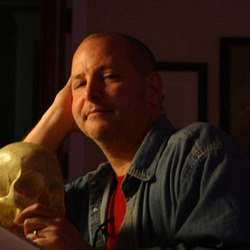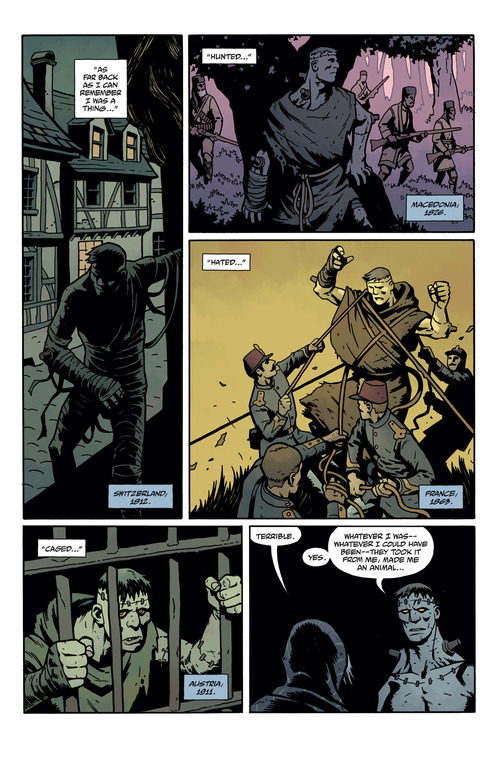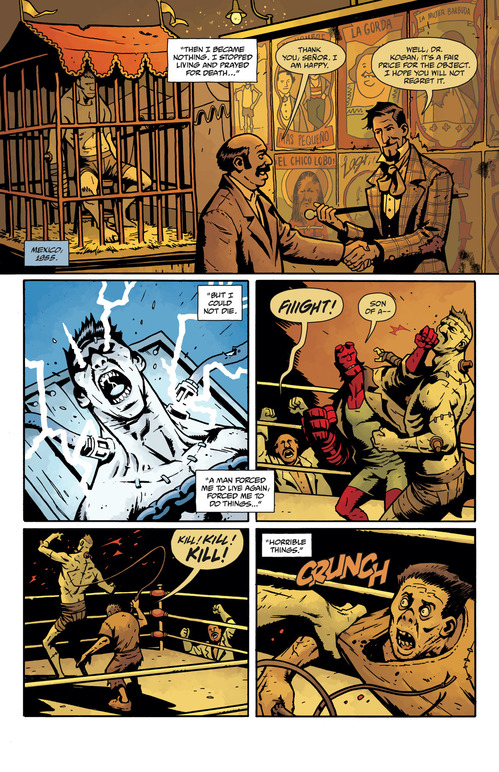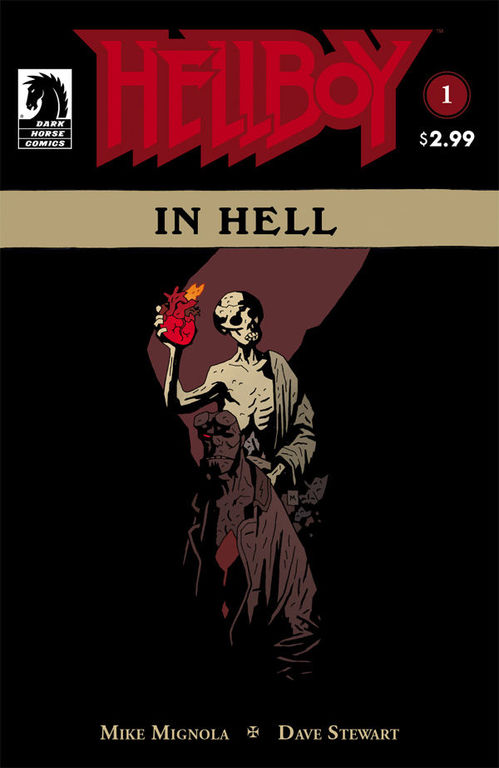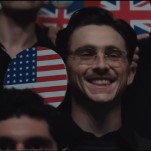“The weirdest thing I’ve ever written”: Mike Mignola on Frankenstein Underground & the Future of the Mignolaverse
For the last 20 years, Mike Mignola has been building an empire. Brick by brick, mini-series by mini-series, the cartoonist has written, co-written, drawn and provided covers for over 100 interlocking issues. Through sheer force of quality, the Hellboy character has become one of publisher Dark Horse’s most recognizable characters, and his popularity has grown with feature film adaptations, animated films and action figures. The shared universe the big, red paranormal investigator exists within continues to grow larger and larger each month, and the Mignolaverse line comprises a significant chunk of Dark Horse’s publishing slate.
Initially following the solo adventures of Hellboy, a demon summoned to earth by a Nazi occultist, the series quickly expanded its foundation to encompass the whole of earth and other planes of existence; other characters and groups branched off into their own titles. The Bureau of Paranormal Research and Defense (the organization Hellboy works for) was the first, but individuals like the pyrokinetic Liz Sherman, the fish-man Abe Sapien, the disembodied spirit Johann Krauss and more eventually got their time in the spotlight. This March, Frankenstein’s Monster gets his.
![]()
The character was first introduced into the Mignolaverse in 2011’s Hellboy: House of the Living Dead original graphic novel, and now Mignola and artist Ben Stenbeck are giving him the floor for his first five-issue mini-series. Mignola was nice enough to discuss the series, its origins and future, as well as what his plans for the rest of the Mignolaverse are.
Paste: I read the first two issues of Frankenstein Underground and my first question is: why? Why Frankenstein’s Monster? I know you had introduced him a couple years ago in the Hellboy: House of the Living Dead graphic novel, but why Frankenstein’s Monster? Why this character? And why now?
Mike Mignola: You know, I’m trying to remember why. So much of the stuff that we do is determined by having work for certain artists, and Ben Stenbeck had been doing the Baltimore book and he kind of felt like, ‘Y’know…I’ve done this for a long time.’ He was looking for something different. And once I realized we had the Frankenstein’s Monster—which wasn’t the original intention with House of the Living Dead—but when I realized that is the Frankenstein’s Monster at some point I started thinking, ‘Wouldn’t it be fun and really different to do just a book that’s a parade of monster action?’
And talking to Ben, it was something that would be a nice change from doing Baltimore. So the original idea was: we’d create this kind-of-crazy book which is just a parade of monster action. And then the plot started coming together in my head and I realized it really did shape-up to be just one book. So it started off as just this fun thing to do with Ben, and then it turned into actually a really important piece in this puzzle we’re putting together that resolves everything in the Hellboy/B.P.R.D. world. So once I started plotting it, it just tightened up in a way that I didn’t actually anticipate.
Paste: The series begins in 1956…
Mignola: Yes.
Paste: It sounds like a lot of thought went into what we’re seeing with the finished product, so why that date? It seems pretty specific. Why 1956?
Mignola: Basically because that’s when we saw him last. That’s when House of the Living Dead is set. I kind of wanted to pick up directly after that. There was enough time to deal with the Frankenstein Monster—the fact that he’s been running around since…god knows,1790…1812? I’m not sure what it is. I just thought, ‘Well, since we’ve introduced him in ’56, let’s just pick up straight after, so we don’t have to talk about what he’s been doing since House of the Living Dead.’ Basically, once I recognized we had him, I said let’s do something with him. There was nothing particularly significant about that book taking place in the ‘50s, especially since it almost entirely takes place underground.
Paste: That was something else that I noticed. The character comes from a Gothic, Romantic novel, but in Frankenstein Underground I saw a lot of Lovecraftian, Victorian influences and horror influences from the early 20th century, but there was also some, like, Fritz Leiber, High Fantasy stuff, maybe even a little of DC’s Warlord character. I was interested in what you were looking at; it doesn’t seem like the same things that people associate with Frankenstein or Frankenstein’s Monster.
Mignola: That was basically the fun, simple kernel of an idea: take the Frankenstein’s Monster and throw him into the Edgar Rice Burroughs Hollow Earth, which I think is what a lot of the stuff you were referring to is—[it] really comes from that Edgar Rice Burroughs/center of the earth stuff with the troglodyte people and lost cities and shit like that. It was just, ‘Oh, this’ll be fun.’ It was simple as that. And then, once you start justifying that stuff by saying, ‘Ok, in the Hellboy universe, we’ve got this prehistoric stuff and…’ It was a place for me to trot out a bunch of the mythology that hasn’t really been developed. I’ve got so much of that ancient Hyperborean stuff worked out—the way this prehistory of the Hellboy universe works, and also the Victorian era stuff. It was a matter of taking that fun idea and then saying, ‘Well, once we’ve got that, let’s bring in these various things that connect it to the bigger mythology that I’m developing.’
-

-

-

-

-

-

-

-

-

-

-

-

-

-

-

-

-

-

-

-

-

-

-

-

-

-

-

-

-

-

-

-

-

-

-

-

-

-

-

-

